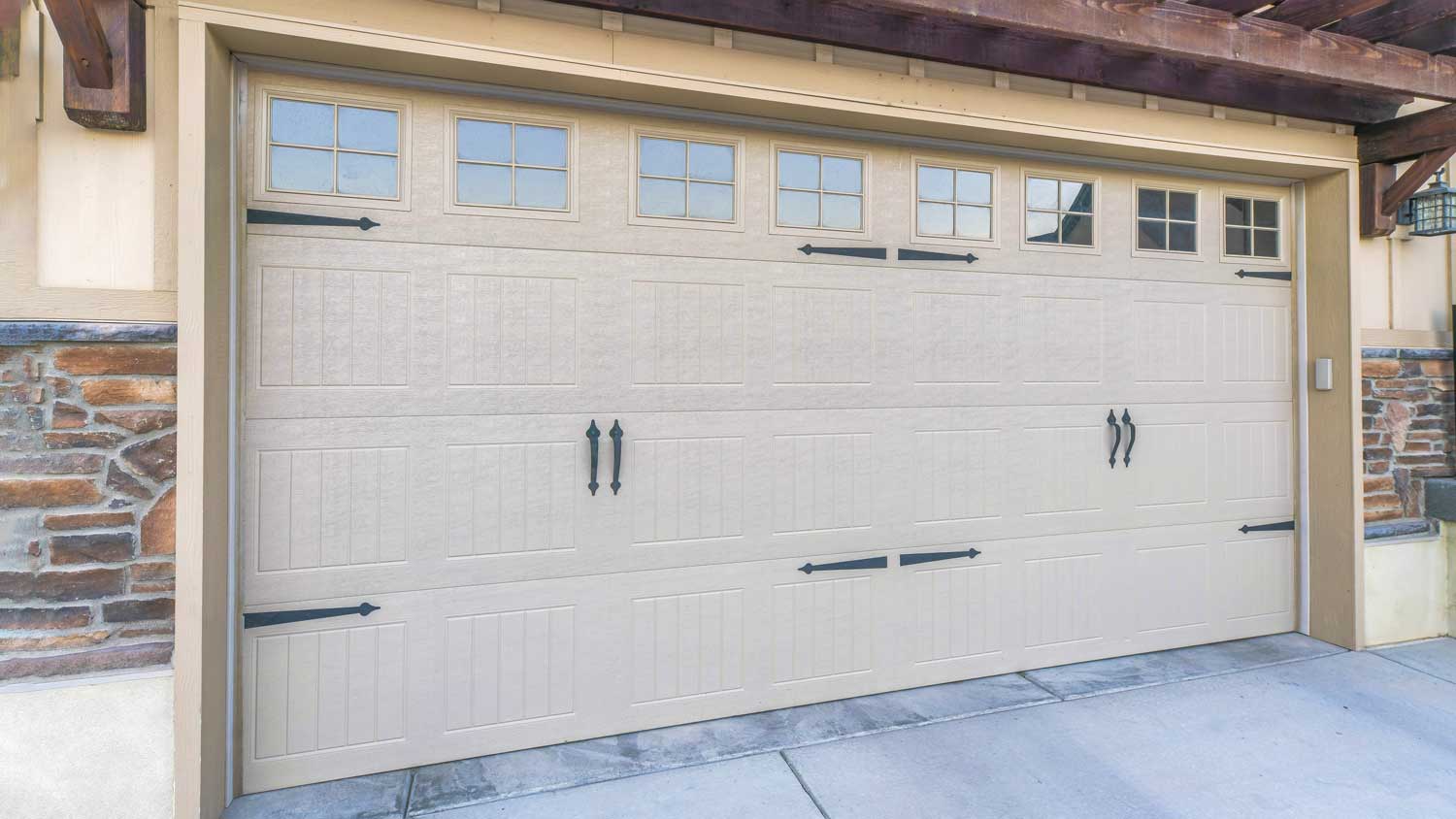How to Keep Your Garage Door from Freezing to the Floor
Use these six tips to help winterize your garage door


A frozen garage door can sneak up on you when you least expect it. A random cold snap with a splash of rain or snow, and suddenly, your garage door is refusing to open. Learn how to keep your garage door from freezing to the floor to prepare for the next frigid day.
1. Use a Silicone-Based Lubricant
Just like water, everyday grease lubricants tend to freeze when the temperature gets too low. This freezing can prevent your door from opening as the wheel freezes to the rails of the garage.
Silicone-based lubricants have a lower temperature required for freezing. So unless your garage door is in a frozen tundra, you’re likely not going to need to worry about this specific area of the garage door freezing over.
2. Sprinkle Salt Underneath the Door
Table salt helps prevent water from freezing. While you can’t necessarily apply it to the door itself, you can apply it to the floor on the inside and outside. This way, the snow melts faster and doesn’t refreeze to glue your garage door to the floor, preventing it from opening.
You’ll want to ensure that you have a sealant on both your driveway and your garage floor, though. Since salt speeds up the freezing and thawing process, this can lead to more stress fractures on the concrete.
3. Install a Garage Heater
Another easy solution that can save you a headache is to install a small electric garage heater. If you know that it’s supposed to snow overnight, turn one of these on when you first wake up to help melt the ice off the door before you need to head off to work.
However, you should only use an electric heater when you’re awake and around to monitor it. Also, don’t use such a heater in a garage cluttered with things and keep it away from anything it might melt. It’s a heat source that can pose a fire risk, so proceed with caution.
4. Shovel Snow Even if You’re Not Going Anywhere

While this isn’t the most fun tip on the list, it’s still a solution. If it snows on the weekend and you don’t plan on going anywhere, you should still get out there and shovel near the garage door. This way, none of the snow melts and refreezes.
Some winters are brutal where it snows all day, so don’t waste your time and energy if there’s a high chance it’s going to keep on coming down. However, once the snow starts letting up, take a break from your movie marathon to clear it away.
5. Check the Seal
Weatherstripping along the bottom of the garage is meant to keep precipitation like snow in the winter and rain in the summer out of your garage. Over time, because it’s pushed up against the ground, you’re likely to notice the weatherstripping coming apart.
Around every five years, you should look into replacing the weatherstripping, as this is an important step to winterize your garage door.
6. Install Insulation
Adding insulation to the garage door and walls can help keep the warm air in. That extra warmth can come in handy, especially if your garage doubles as a workshop or home gym and you don’t want to freeze while putting in work.
If your garage door has some dents or is past 25 years old, it might be time to get a new one. You should replace your garage door to help save on energy and add curb appeal. This time, you can even opt for a garage door that comes with insulation. Hiring a local garage door company will also present you with options that cater to your exact climate.
DIY vs. Hiring a Pro
Installing insulation, weatherstripping, and replacing lubricant are all time-consuming jobs and can do more harm than good if not done correctly. In this situation, hire a local garage door repair service to tackle the winterization of the garage door.
While you can still hire someone to shovel or salt the floors, these are also tasks you can handle yourself. Or you can at least hire one of the neighborhood kids to give them some extra pocket money.
Frequently Asked Questions
It’s best to prevent cold air from entering your garage through the space underneath the garage door. Stop cold air in its tracks by adding or replacing the weatherstripping underneath the door seal. You can also add weatherstripping along the sides and top of the garage door to prevent air leakage, and it’s a relatively easy DIY fix.
You can prevent your garage from freezing by applying techniques like sprinkling salt onto the garage floor, installing a garage heater, shoveling snow outside the door, and more. Additional methods of preventing your garage from freezing over is to seal all potential air gaps, replace weatherstripping, and adding insulation to the surrounding walls to keep the heat from escaping.





- Garage Door Installation Tips Every Homeowner Should Know
- 11 Essential Tips for Buying a Garage Door
- What to Do if You Backed Into Your Garage Door
- 10 Garage Door Maintenance Tips for Maximum Longevity
- Convert Garage Door to Entry Door
- Who Do You Hire to Fix or Install a Garage Door?
- 50 Stylish Garage Door Ideas
- The Most Common Garage Door Opener Problems and How to Fix Them
- Standard Garage Door Sizes and How to Pick the Right One for Your Home
- What Are All the Parts of a Garage Door?














